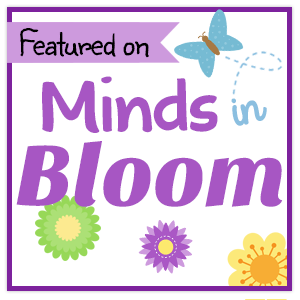Whenever I was about to begin a new chapter in my life, my dad would always remind me that there was an easy escape back to the safety and security of my childhood home. When I went off to elementary and middle school, he made sure that I knew that I was a quality kid and that if I encountered anyone who might seem not to like me, it was their issue, not mine. If I was uncomfortable, I should just come back home and talk about it. The only time I remember using that escape plan was when the eighth grade girls decided that the only way that the seventh grade girls could be in their club was to sing an embarrassing song on the bus, and to allow the eighth graders to roll them down a hill in our playground inside of a (somewhat) empty trash can. I opted to quietly walk home for lunch every day for two weeks rather than subject myself to that insanity. My mom was not wearing pearls and heels when I got there, but she made great lunches and reminded me that I was a pretty great kid. They still asked me to be in their club. I declined and started a new one.
The escape plan was offered to me once more on the eve of my first day in high school. Remember, if you meet someone who doesn't like you, that's their problem and their loss. Find another friend. This way of thinking served me so well through high school and college. I made lots of friends, have many great memories, and never walked home for lunch again. My parents never had to engage in problem solving or conflict escalation because of another kid who was treating me unfairly. This plan extended to the eve of my wedding day. Daddy reminded me once more that if it didn't work out, I could always go home. Many years, two children, and six grandchildren later, we're still together. I guess it worked out!
A keen observer of people and what they do, I acquired enough undergrad credits for majors in anthropology, sociology, and psychology. I then went on to earn my graduate degree in education, where I thought that all I already knew about people and how they behave in groups and individually would be a great resource to draw upon. Imagine my surprise when I encountered the chaos of a first year teacher who was handed the key to an overcrowded and out of control group of kids. They were not only mean to each other, but some of them were mean to their teacher too. They sure weren't even all girls, but the term "mean girls" seems to work for me as I try to make sense of behaviors that aren't exclusive to girls. The behaviors that I call mean girl stuff are exhibited at all ages and all walks of life.
From a nursery school boy who prompts other kids to do things that he has calculated will get them in trouble with the teacher to a group of 80 year old women in a retirement home who tell the 90 year old that there is no room at the dinner table for her, mean girls are all around us. We can't control them or change what they do, but we can control our reaction to them. They can't hurt us if we refuse to internalize the hate.
I kind of encountered a mean girl today. It made me think about my reaction, at first stormy, and then much more controlled and peaceful. The storm never reached her, and she'll never know. It wouldn't have changed anything or hurt her at all anyway, but the anger surely would have changed me. I chose not to engage and moved on. Can't return to my childhood home, but I don't need to. I have built in safeguards in place now for life. This is the gift that I choose to bring to my students. They need to truly believe that the bad behavior of another really has nothing to do with them. They can chill and move on.
My thoughts today wandered to the toltec philosophy of the indigenous people of long ago Mexico. This philosophy is summed up so beautifully in the book The Four Agreements by Don Miguel Ruiz. I fell in love with this book in 2003, so much so that I bought a pile of them and gave them to everyone in my school as a holiday gift. Some adored it and still refer to its lessons today. I'm sure that some were not as thrilled, but I can't let that take away from the joy I felt in giving it. My experience today sent me in search of a review of this ancient wisdom.
The four agreements (that each of makes with ourself) are:
1. Be impeccable with your word.
Say what you mean. Words have so much power. Use that power in the direction of truth and love.
2. Don't take anything personally. This is the lesson my dad taught me so long ago.
The things others do and say are all about them, and actually have nothing to do with you. When
you realize this, the words and actions of others can't hurt you. You give them no power over you.
3. Don't make assumptions.
Listen. Ask questions. Make sure you truly understand what the other person is trying to
communicate. This one can eliminate needless drama and save so much time!
4. Always do your best.
If you have truly done your best in every situation, the judgments of others can't touch you, and
you won't second guess and over judge yourself.
Pretty simple, and yet potentially life-changing. These are challenging times that we live in. Mean girls may show up any time. How to communicate these four simple agreements to our kids? How can we build the kind of self-talk and self-healing strategies that will serve our students in life? In my opinion, this stuff is more important than sight words and the multiplication tables. Life skills. Don't leave school with out them. Please.
Maybe I can help. I've created a set of posters for big and little kids too that I believe will help us as teachers to start some conversations around the wisdom of the four agreements. You can find them here:
For people who understand the power of the four agreements, the mean girls have no power. We carry our spiritual home inside of each of us.
For more posts like this one on Empathy, Equity, and Empowerment, be sure to check out this new blogging collaborative with lots of lesson ideas, free resources, and ideas to ponder.









































